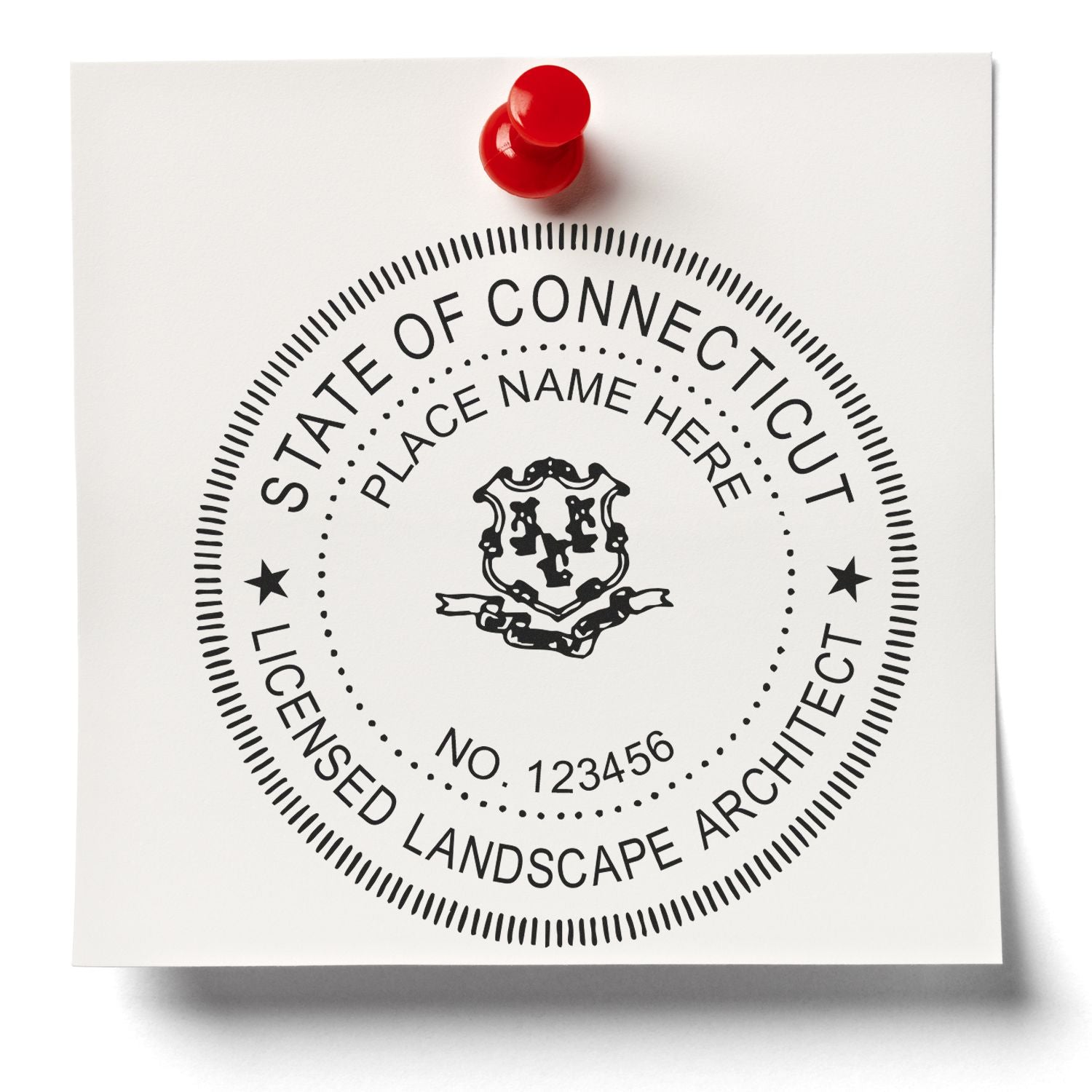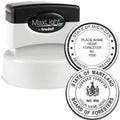The Role of a Connecticut Landscape Architect
Overview of the Landscape Architect Profession
A landscape architect plays a vital role in designing and planning outdoor spaces that are aesthetically pleasing, functional, and sustainable. They combine their knowledge of art, design, and science to create landscapes that enhance the natural environment while meeting the needs of individuals and communities.
Connecticut landscape architects are trained professionals who possess a deep understanding of the local environment, climate, and regulations. They work on a wide range of projects, including residential gardens, public parks, commercial developments, and urban planning initiatives. Their expertise extends beyond just plants and horticulture, as they also consider factors such as drainage, soil composition, and the integration of structures into the landscape.
Connecticut landscape architects collaborate with clients, stakeholders, and other professionals to develop innovative and practical solutions. They utilize their skills in conceptualizing, planning, and presenting design proposals to ensure that the final outcome aligns with the client's vision and meets the project's requirements.
Connecticut Landscape Architect Requirements
To practice as a landscape architect in Connecticut, individuals must meet certain requirements set forth by the state. These requirements are in place to ensure that landscape architects possess the necessary knowledge and expertise to carry out their professional responsibilities effectively.
The Connecticut landscape architect requirements include:
-
Education: Completion of a bachelor's or master's degree in landscape architecture from an accredited program recognized by the Connecticut Department of Consumer Protection.
-
Experience: Acquisition of relevant professional experience under the supervision of a licensed landscape architect. The exact number of required experience hours may vary depending on the level of education obtained.
-
Examination: Successful completion of the Landscape Architect Registration Examination (LARE), which consists of multiple sections assessing various aspects of landscape architecture knowledge and competency.
-
Registration: Submission of an application for registration as a landscape architect to the Connecticut Department of Consumer Protection. This includes payment of applicable fees and meeting any additional requirements outlined by the department.
By fulfilling these requirements, landscape architects in Connecticut demonstrate their commitment to upholding the standards and ethics of the profession. It is important to note that landscape architects practicing in Connecticut are also required to obtain a Connecticut landscape architect stamp or seal. This stamp or seal serves as a professional identifier and signifies that the landscape architect is registered and authorized to practice in the state. For detailed information on the Connecticut landscape architect stamp, including design specifications, visit our article on connecticut landscape architect stamp.
Understanding the role and requirements of a Connecticut landscape architect is essential for those considering a career in this field or seeking the services of a qualified professional. With their expertise and knowledge, Connecticut landscape architects contribute to the creation of beautiful and sustainable outdoor spaces that enhance the quality of life for individuals and communities alike.
Understanding Professional Landscape Architect Stamps
To establish credibility and professionalism in the field of landscape architecture, it is important for Connecticut landscape architects to have a professional landscape architect stamp. This section will provide an overview of what a professional landscape architect stamp is and highlight the importance and benefits of having one.
What is a Professional Landscape Architect Stamp?
A professional landscape architect stamp, also known as a seal, is a unique mark or impression that signifies the approval and authorization of a licensed landscape architect. It is typically a round or rectangular design that incorporates the landscape architect's name, license number, and other relevant information. The stamp is used to authenticate and validate documents, plans, drawings, and other professional work prepared by the landscape architect.
In Connecticut, landscape architects are required to obtain a professional landscape architect stamp as part of their professional practice. It serves as a symbol of their expertise, adherence to industry standards, and compliance with state regulations. The stamp is considered an official representation of the landscape architect's qualifications and authority to practice in the field.
Importance and Benefits of Having a Professional Landscape Architect Stamp
Having a professional landscape architect stamp offers several key benefits. Firstly, it provides legal protection and establishes the credibility of the landscape architect's work. When a document or plan bears the landscape architect's stamp, it signifies that the work has been prepared in accordance with professional standards and is compliant with applicable laws and regulations. This can help to prevent unauthorized use, plagiarism, and potential legal disputes.
Additionally, the landscape architect stamp enhances the professional image and reputation of the individual. It demonstrates to clients, colleagues, and regulatory bodies that the landscape architect is qualified, licensed, and committed to upholding professional integrity. This can lead to increased trust, respect, and confidence in the landscape architect's abilities.
Furthermore, the stamp facilitates efficient communication and collaboration within the industry. By including the stamp on documents, it becomes easier for other professionals, contractors, and authorities to identify the responsible landscape architect. This helps to streamline the review process, ensure accountability, and maintain accurate records.
It is important to note that the specific design and specifications of the landscape architect stamp may vary. Connecticut landscape architects should refer to the relevant state regulations and guidelines for details on the required design, size, and content of the stamp. For more information on the design and specifications of a Connecticut landscape architect stamp, you can visit our article on connecticut landscape architect stamp design.
By obtaining and utilizing a professional landscape architect stamp, Connecticut landscape architects can demonstrate their professionalism, comply with state regulations, and enhance their reputation in the field. It serves as a valuable tool in ensuring the authenticity and integrity of their work, providing peace of mind to both the landscape architect and their clients.
Legal Considerations
As a professional landscape architect in Connecticut, it is essential to understand the laws and regulations surrounding the use of landscape architect stamps. These stamps play a vital role in ensuring compliance and maintaining the integrity of the profession.
Connecticut Laws and Regulations Regarding Landscape Architect Stamps
In Connecticut, landscape architects are required to obtain a professional landscape architect stamp in order to sign and seal their drawings, plans, and other professional documents. The Connecticut General Statutes and regulations from the Connecticut Department of Consumer Protection dictate the specific requirements for landscape architect stamps.
These laws outline the qualifications and responsibilities of landscape architects, including the use of a stamp or seal on their work. The landscape architect stamp serves as a mark of authenticity and establishes the professional's accountability for the design and execution of the project. It signifies that the plans and documents have been prepared by a licensed and qualified landscape architect.
The Role of Landscape Architect Stamps in Ensuring Compliance
Landscape architect stamps play a crucial role in maintaining compliance with state regulations and ensuring the safety and well-being of the public. By affixing their stamp to documents, landscape architects take responsibility for the accuracy and quality of their work.
The landscape architect stamp signifies that the professional has met the necessary educational and experience requirements and is licensed to practice in Connecticut. It provides confidence to clients, contractors, and regulatory authorities that the landscape architect's work has been reviewed and approved by a qualified professional.
Furthermore, landscape architect stamps contribute to maintaining the high standards and integrity of the profession. They help prevent unlicensed individuals from presenting themselves as qualified landscape architects, protecting the public from potential harm or subpar work.
It is important for landscape architects to be familiar with the specific requirements for landscape architect stamps in Connecticut. This includes understanding the design specifications and guidelines for the stamp, as well as any additional information provided by the Connecticut Department of Consumer Protection. For more details on the design and specifications of the Connecticut landscape architect stamp, refer to our article on Connecticut landscape architect stamp design.
By adhering to the laws and regulations surrounding landscape architect stamps, Connecticut landscape architects can ensure compliance, maintain professional standards, and provide quality services to their clients.
Obtaining a Connecticut Landscape Architect Stamp
To practice as a landscape architect in Connecticut, obtaining a landscape architect stamp is an essential step. This stamp serves as a professional credential and signifies that the architect is licensed and authorized to provide landscape architectural services in the state. The process of obtaining a landscape architect stamp involves an application and meeting specific requirements.
Application Process for a Landscape Architect Stamp
To apply for a landscape architect stamp in Connecticut, individuals must follow the application process outlined by the Connecticut Department of Consumer Protection (DCP). The DCP is responsible for regulating professional licensing in the state.
The application process typically involves the following steps:
-
Completion of Application: Applicants must complete the landscape architect stamp application form provided by the DCP. This form requires personal and professional information, including educational background, work experience, and contact details.
-
Submission of Fees: A non-refundable application fee is typically required. The fee amount may vary, so it is important to check the current fee schedule provided by the DCP. Payment can usually be made by check or money order.
-
Documentation: Applicants must provide the necessary supporting documentation, which may include proof of education, professional experience, and any additional certifications or licenses held.
-
Verification of Credentials: The DCP may require applicants to provide official transcripts directly from their educational institutions and verification of professional experience. This may include employment references or letters of recommendation.
-
Passing the Landscape Architect Registration Examination: In most cases, applicants must have successfully passed the Landscape Architect Registration Examination (LARE) to be eligible for a landscape architect stamp. The LARE is a national examination that tests the knowledge and skills required for professional practice.
Once the application and all supporting documentation have been submitted, the DCP will review the application and verify the information provided. The review process may take several weeks or months, depending on the workload of the department.
Requirements for Obtaining a Landscape Architect Stamp
To obtain a landscape architect stamp in Connecticut, individuals must meet certain requirements set by the DCP. These requirements typically include:
-
Education: Applicants must have completed a landscape architecture program accredited by the Landscape Architectural Accreditation Board (LAAB) or an equivalent program approved by the DCP.
-
Experience: Applicants must have a minimum level of professional experience, typically ranging from two to four years, depending on their education. This experience must be under the direct supervision of a licensed landscape architect.
-
Passing the LARE: As mentioned earlier, passing the Landscape Architect Registration Examination (LARE) is a crucial requirement for obtaining a landscape architect stamp. The LARE is a comprehensive examination that tests the applicant's knowledge and skills in various areas of landscape architecture.
-
Character and Fitness: Applicants must demonstrate good character and fitness to practice as a landscape architect. This may involve disclosing any criminal history or disciplinary actions taken against them in the past.
It is important to note that the specific requirements for obtaining a landscape architect stamp may vary over time. Therefore, it is advisable to consult the latest information provided by the DCP to ensure compliance with the current requirements.
Once an individual has successfully obtained a landscape architect stamp, they are authorized to use the stamp on their professional documents and drawings. The landscape architect stamp serves as a symbol of professionalism and expertise, providing confidence to clients and colleagues in their abilities as a licensed landscape architect. For more details on the design and specifications of the Connecticut landscape architect stamp, refer to our article on connecticut landscape architect stamp design.
Using the Landscape Architect Stamp
Once you have obtained your Connecticut Landscape Architect Stamp, it is important to understand where and when to use it, as well as the best practices for utilization.
Where and When to Use the Landscape Architect Stamp
As a Connecticut landscape architect, you will be required to use your landscape architect stamp on certain professional documents and drawings. Some common instances where the landscape architect stamp is used include:
-
Construction Documents: When preparing construction documents, such as plans, drawings, or specifications, you are typically required to affix your landscape architect stamp. This verifies that you, as a licensed professional, have reviewed and approved the documents.
-
Permit Applications: When submitting permit applications for landscape architecture projects, the landscape architect stamp is often required. This helps ensure that the plans have been prepared and reviewed by a qualified professional.
-
Official Correspondence: In some cases, landscape architects may use their landscape architect stamp on official correspondence, such as letters or reports, to indicate their professional involvement and expertise.
It's important to familiarize yourself with the specific requirements set by the Connecticut laws and regulations when it comes to using the landscape architect stamp. For detailed specifications and guidelines, refer to our article on Connecticut landscape architect seal specifications.
Best Practices for Utilizing the Landscape Architect Stamp
To ensure the proper use of the landscape architect stamp, consider the following best practices:
-
Stamp Placement: Place the landscape architect stamp in a visible and legible manner on the documents. The stamp should be clear and not obstruct any critical information.
-
Ink Color: Use a color of ink that provides a clear and contrasting impression on the document. Black or blue ink is commonly used for landscape architect stamps.
-
Stamp Size: The size of the landscape architect stamp should be appropriate for the document. It should be easily visible without overwhelming the content.
-
Stamp Design: Ensure that your landscape architect stamp design complies with the requirements set by the Connecticut landscape architect board. For information on the specific design elements, refer to our article on Connecticut landscape architect stamp design.
-
Stamp Maintenance: Regularly check your landscape architect stamp to ensure that it is in good condition and produces a clear impression. Replace the stamp if it becomes worn or damaged to maintain the professionalism of your work.
By following these best practices, you can effectively utilize your landscape architect stamp and maintain compliance with the regulations set by the state of Connecticut.
Remember, the landscape architect stamp is not only a professional requirement but also a symbol of your expertise and credibility. Ensure that you utilize it appropriately and responsibly to uphold the standards of the landscape architecture profession.
About ESS
At ESS, we take pride in being the leading makers of custom rubber stamps, professional seals, and notary stamps. With years of experience under our belt, we have honed our skills to perfection, delivering nothing but the best to our valued customers.
Our commitment to quality is second to none, and we go to great lengths to ensure that every product that leaves our doors meets the highest standards. We employ state-of-the-art technology and the latest industry best practices to design and manufacture our products, ensuring their longevity and precision. Our team work tirelessly to create innovative solutions that help our customers achieve their goals quickly and efficiently. We understand the importance of precision and accuracy in our line of work, and we are committed to delivering products that exceed expectations.
At ESS, we believe that our customer service is just as important as the quality of our products. We are dedicated to providing exceptional customer service, and we take the time to listen to our customers' needs and concerns. We offer a state board guarantee on all our products, giving our customers peace of mind that their investment is protected.
In conclusion, ESS is more than just a maker of custom rubber stamps, professional seals, and notary stamps. We are a team of dedicated professionals who are passionate about delivering quality products and exceptional customer service. Our commitment to excellence is unwavering, and we are confident that you will be satisfied with our products and service.


















